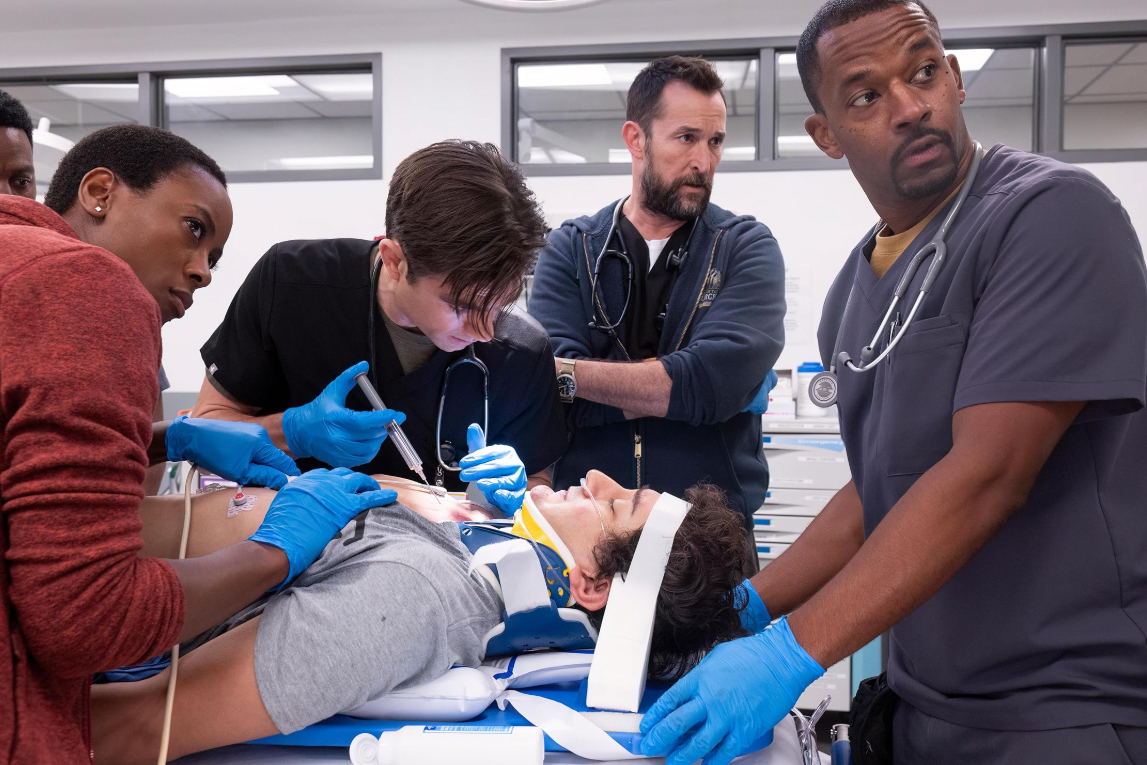Rating: 8/10
In a TV landscape dominated by spin-off miniseries and ultra-expensive event shows, it’s rare to find a show like “The Pitt.” The 15-episode first season departs from the six- or seven-episode runs popularized by shows like “The White Lotus.” “The Pitt” makes full use of its robust runtime.
Showrunner R. Scott Gemmill and star Noah Wyle might be best known for 1990s TV giant “ER.” The show was responsible for launching the careers of stars like George Clooney and revitalizing the subgenre of the “hospital drama.” The returning partnership might suggest “The Pitt” is some form of spinoff or sequel to “ER,” but Wyle’s Dr. Robby and the rest of the “Pitt” crew make it clear to us from minute one that they’re a new crew with their own work to do.
One standout difference from “ER” is the season’s real-time progression, with each episode representing one hour in the cast’s elongated 15-hour shift. This format change is a welcome one, and “The Pitt” is at its strongest when it’s in tune with the breakneck demands of an emergency room job.
Get The Daily Illini in your inbox!
That isn’t to say that “The Pitt” lacks heart. However sparse the downtime is between degloved limbs and unruly patients, it’s levied with fully realized and endearing interactions between the show’s grab bag of characters.
Attending physician Dr. Robby is easily understood as the heart and soul of “The Pitt’s” day shift crew, but Wyle, also a writer on the show, crafts a much more multifaceted character. The lingering trauma of the COVID-19 pandemic on healthcare workers is tactfully brought to light in brief flashbacks, and it’s clear by the 15th hour that Wyle is as flawed and as human as the rest of his team.
While Wyle’s performance can feel like a spectrum between snarky and grumpy, his character develops tenfold when he’s with characters like Dr. King (Taylor Dearden) and Dr. Mohan (Supriya Ganesh). Even when the show’s repertory players can feel clichéd, they’re both earnest portrayals of real healthcare workers. The characters also act as vehicles for “The Pitt” to make its thesis on the realities of the healthcare system.
“The Pitt” can feel like it’s hitting audiences over the head with its themes, but they’re themes worth exploring. The hospital system is in a rough spot after COVID-19, and it can almost feel like a downward trajectory when compounded with underfunding and resource shortages.
The struggles and shortcomings of the American medical system deserve the time they get with “The Pitt.” These issues might not be subtle when they pertain to characters like “The Pitt’s” chief medical officer, Gloria (Michael Hyatt), but they justify their stay.
The show also benefits from its interest in its own characters, a surprisingly rare value among TV shows today. Even when it comes to interns or second-year residents like Santos (Isa Briones) and Javadi (Shabana Azeez), their base characterizations are properly layered into the show’s larger mission.
Letting characters develop over multiple seasons is the greatest tool of a long-form TV series, and “The Pitt” makes that promise to its audiences. Already renewed for a second season due in January 2026, “The Pitt” is a perfect encapsulation of what made the prestige TV shows of the ’90s and 2000s so great. The back-to-basics approach to story structure and dramatic plotting is a tried and true storytelling technique, and “The Pitt” is an example demonstration of that.
For as flashy and lurid as its multimillion-dollar counterparts are, “The Pitt” is an undeniable, almost objective success. A fundamental grasp on the basic rhythms of TV and an earnest belief in the value of its own characters are enough to put it in a class of its own when it comes to TV today. The work might not be pretty, but “The Pitt” is worth tuning in to.






